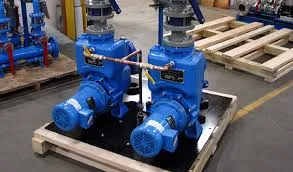English
- Afrikaans
- Albanian
- Amharic
- Arabic
- Armenian
- Azerbaijani
- Basque
- Belarusian
- Bengali
- Bosnian
- Bulgarian
- Catalan
- Cebuano
- Corsican
- Croatian
- Czech
- Danish
- Dutch
- English
- Esperanto
- Estonian
- Finnish
- French
- Frisian
- Galician
- Georgian
- German
- Greek
- Gujarati
- Haitian Creole
- hausa
- hawaiian
- Hebrew
- Hindi
- Miao
- Hungarian
- Icelandic
- igbo
- Indonesian
- irish
- Italian
- Japanese
- Javanese
- Kannada
- kazakh
- Khmer
- Rwandese
- Korean
- Kurdish
- Kyrgyz
- Lao
- Latin
- Latvian
- Lithuanian
- Luxembourgish
- Macedonian
- Malgashi
- Malay
- Malayalam
- Maltese
- Maori
- Marathi
- Mongolian
- Myanmar
- Nepali
- Norwegian
- Norwegian
- Occitan
- Pashto
- Persian
- Polish
- Portuguese
- Punjabi
- Romanian
- Russian
- Samoan
- Scottish Gaelic
- Serbian
- Sesotho
- Shona
- Sindhi
- Sinhala
- Slovak
- Slovenian
- Somali
- Spanish
- Sundanese
- Swahili
- Swedish
- Tagalog
- Tajik
- Tamil
- Tatar
- Telugu
- Thai
- Turkish
- Turkmen
- Ukrainian
- Urdu
- Uighur
- Uzbek
- Vietnamese
- Welsh
- Bantu
- Yiddish
- Yoruba
- Zulu
Telephone: +86 13120555503
Email: frank@cypump.com
Dec . 05, 2024 05:44 Back to list
Choosing the Right Pumps for Efficient Septic Tank Systems and Maintenance Solutions
Understanding Pumps for Septic Tanks A Comprehensive Guide
Septic systems serve as a fundamental component of wastewater management in many rural and suburban areas. At the heart of these systems lies an essential piece of equipment the septic tank pump. This article explores the significance of pumps for septic tanks, their types, installation, maintenance, and more.
What is a Septic Tank Pump?
A septic tank pump is a mechanical device designed to move wastewater from the septic tank to the drain field or distribution box. Unlike gravity systems, which rely solely on natural flow based on elevation, pumps enable effective wastewater management in locations where elevating the sewage is necessary.
The primary function of a septic tank pump is to ensure that the effluent (liquid waste) is pushed out of the tank to the leach field, where it can be further treated by the soil. Properly functioning pumps are vital to prevent sewage backups and costly repairs, making their role critical in maintaining a healthy septic system.
Types of Septic Tank Pumps
There are primarily two types of pumps used in septic systems effluent pumps and grinder pumps.
1. Effluent Pumps These pumps are designed to handle relatively clear liquid and are installed in septic systems where gravity flow is insufficient. They work by pumping the liquid out of the septic tank into the drain field. Effluent pumps are typically more resistant to clogging than other types of pumps due to their ability to handle solids that may have passed through the septic tank.
2. Grinder Pumps In areas where the wastewater contains larger solids or the discharge point is considerably lower than the tank, grinder pumps become necessary. These pumps grind solids into a slurry before pumping it out under pressure, making them ideal for homes with plumbing situated below the septic tank level.
Installation Considerations
pumps for septic tanks

Installing a septic tank pump is not a DIY project. It is essential to hire qualified professionals who understand local regulations and can ensure that the system is installed correctly. During installation, factors such as pump size, type, and capacity must be considered to fit the specific needs of your property.
Maintenance of Septic Tank Pumps
Like any mechanical device, septic tank pumps require regular maintenance to operate effectively and efficiently. Here are some key maintenance tips
- Regular Inspections Homeowners should schedule regular inspections with professionals to check the pump and the entire septic system for signs of wear or failure. - Check the Alarm System Many septic tank pumps come equipped with alarm systems that alert homeowners if there is a malfunction. Regularly testing these alarms ensures they will work when needed. - Keep the Area Clear Ensure that the area around the septic tank and pump is free from debris, vegetation, and other obstructions that might interfere with the pump's operation.
Signs of Pump Failure
Recognizing the signs of pump failure is crucial. Homeowners should be vigilant for these symptoms
- Slow Drains If sinks, showers, or toilets are draining slowly, it may indicate a problem with the pump. - Bad Odors Foul smells around the septic area may signal a pump not adequately discharging the waste. - Alarm Activation If the pump's alarm goes off, it typically needs immediate attention.
Conclusion
Septic tank pumps are indispensable for the proper functioning of septic systems, ensuring that wastewater is efficiently processed and disposed of. Understanding the different types of pumps, their installation requirements, and maintenance needs can help homeowners manage their septic systems more effectively. With proper care and attention, septic tank pumps can provide reliable service for years, protecting both the environment and the health of residents. Whether you're considering the installation of a new pump or maintaining an existing one, consulting with experienced professionals will ensure that your septic system operates smoothly and efficiently.
-
Horizontal Split Case Pump with GPT-4 Turbo | High Efficiency
NewsAug.01,2025
-
ISG Series Pipeline Pump - Chi Yuan Pumps | High Efficiency, Durable Design
NewsAug.01,2025
-
Advanced Flue Gas Desulfurization Pump with GPT-4 Turbo | Durable & Efficient
NewsJul.31,2025
-
ISG Series Vertical Pipeline Pump - Chi Yuan Pumps | Advanced Hydraulic Design&Durable Construction
NewsJul.31,2025
-
ISG Series Vertical Pipeline Pump - Chi Yuan Pumps | Energy Efficient & Low Noise
NewsJul.31,2025
-
pipeline pump - Chi Yuan Pumps Co., LTD.|High Efficiency&Low Noise
NewsJul.31,2025










